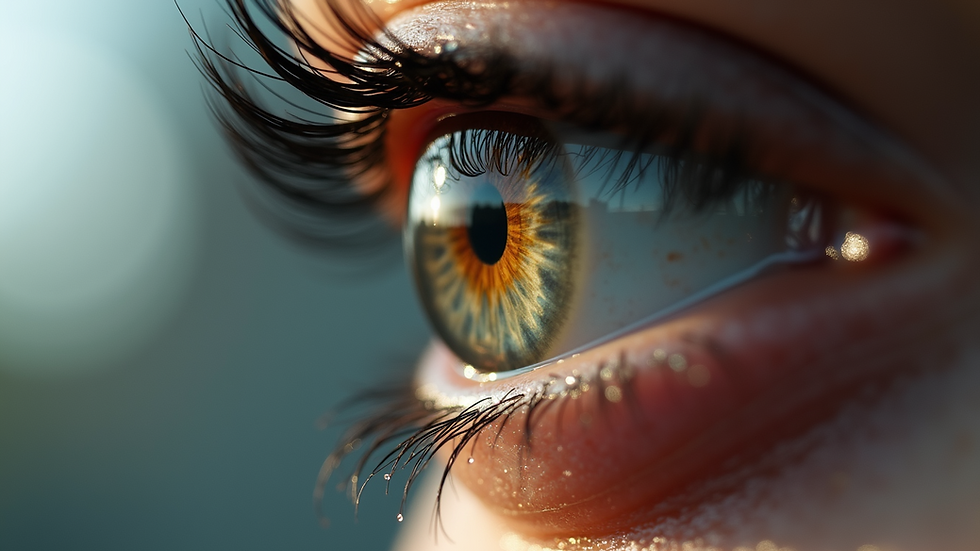Navigating the Tears: Understanding Watery Eyes and Effective Treatments
- sohraab yadav
- Dec 31, 2023
- 2 min read

Watery eyes, also known as epiphora, can be a persistent and bothersome condition. This phenomenon occurs when the eyes produce an excessive amount of tears, leading to a constant overflow onto the cheeks. Understanding the causes and exploring effective treatments can help individuals find relief from this common eye concern.
Causes of Watery Eyes:
Blocked Tear Ducts:
Ducts that carry tears away from the eyes can become blocked due to various reasons, such as infections, inflammation, or age-related changes.
Allergies:
Allergic reactions to pollen, pet dander, dust, or other environmental allergens can stimulate excessive tear production.
Dry Eyes:
Paradoxically, dry eyes can cause watery eyes as the eyes respond to discomfort by producing more tears. This is a common condition, especially in individuals spending long hours on digital devices.
Eye Irritation:
Irritants like smoke, wind, or foreign particles can prompt the eyes to produce more tears as a protective mechanism.
Conjunctivitis:
Inflammation of the conjunctiva, known as conjunctivitis or pink eye, can lead to watery eyes along with other symptoms like redness and itching.
Treatment Approaches:
Warm Compresses:
Applying a warm compress to the eyes can help alleviate irritation, especially if blocked tear ducts or inflammation are contributing to watery eyes.
Artificial Tears:
Lubricating eye drops or artificial tears can provide relief for dry eyes, reducing the need for excessive tear production.
Allergy Management:
Antihistamines, either in eye drop or oral form, can be effective in managing watery eyes caused by allergies. Identifying and avoiding allergens is also crucial.
Blinking Exercises:
Individuals who spend extended periods staring at screens may benefit from consciously blinking more frequently to distribute tears evenly.
Treating Underlying Conditions:
Addressing underlying causes, such as treating infections, managing dry eye syndrome, or addressing blocked tear ducts, is essential for long-term relief.
Avoiding Irritants:
Minimizing exposure to smoke, wind, and other eye irritants can help prevent excessive tear production.
When to Seek Professional Help:
Persistent Symptoms:
If watery eyes persist despite home remedies and lifestyle adjustments.
Pain or Vision Changes:
If watery eyes are accompanied by pain or changes in vision.
Eye Infections:
If there are signs of eye infections, such as redness, discharge, or sensitivity to light.
Injury or Trauma:
In case of eye injury or trauma leading to watery eyes, immediate medical attention is necessary.
Conclusion:
Watery eyes can be a result of various factors, and effective treatment depends on identifying the underlying cause. While some cases can be managed with home remedies and lifestyle adjustments, persistent or severe symptoms warrant professional evaluation. A comprehensive approach that addresses the specific cause of watery eyes ensures optimal relief and improved eye comfort. If in doubt, consulting an eye care professional is the key to understanding and managing this common eye concern effectively.




Comments